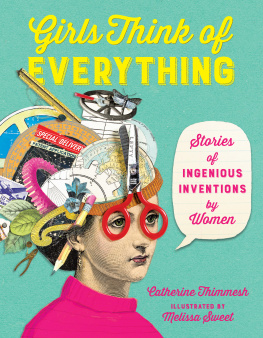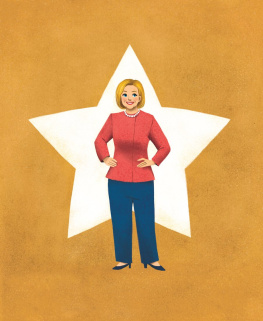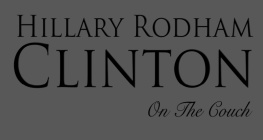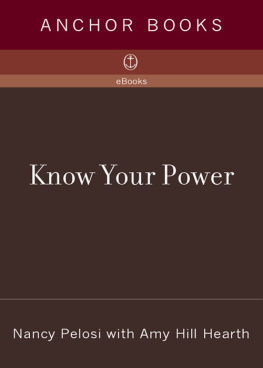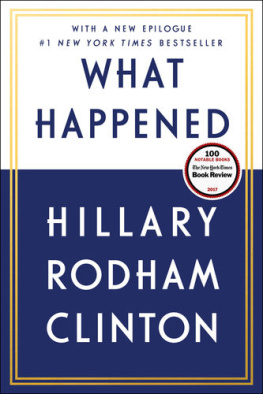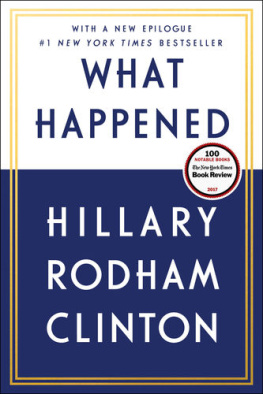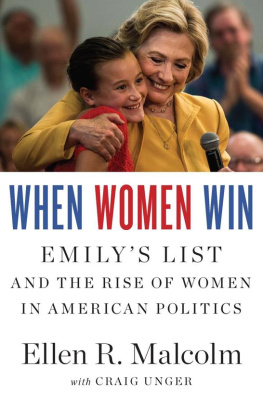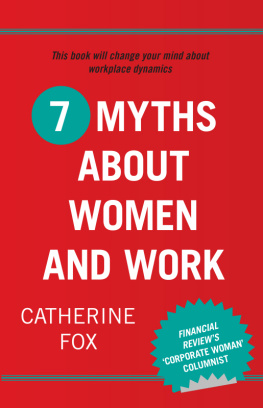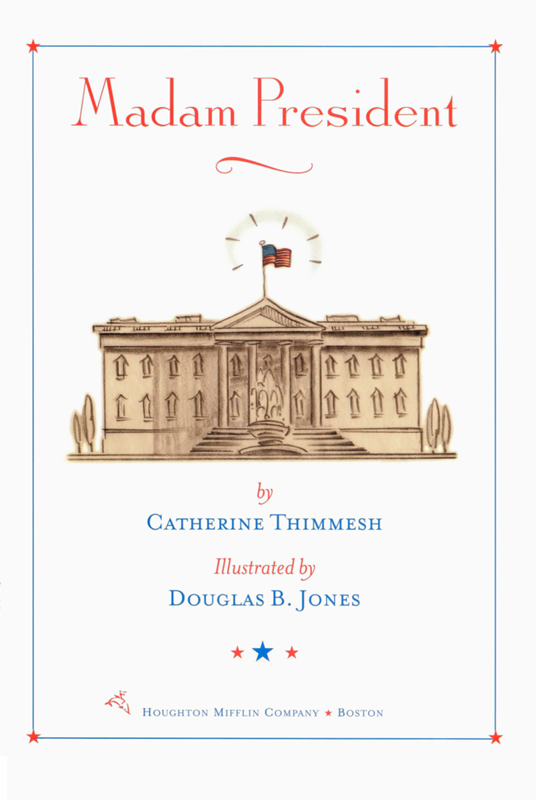
Madam President
by
C ATHERINE T HIMMESH
Illustrated by
D OUGLAS B. J ONES
H OUGHTON M IFFLIN C OMPANY * B OSTON
For PaulAlways
C.T.
For my wonderful partner, Fiona Richards, who contributed
time and talent to the illustration and design of this book
D.B.J.
Text copyright 2004 by Catherine Thimmesh
Illustrations copyright 2004 by Douglas B. Jones
Photomosaic illustration on p. 7475 2004 by Rob Silvers
All rights reserved. For information about permission to reproduce selections from this book, write to Permissions, Houghton Mifflin Company, 215 Park Avenue South, New York, New York 10003.
www.houghtonmifflinbooks.com
The text of this book is set in Mrs. Eaves.
The illustrations were hand-drawn with pencil on paper;
color was applied using Photoshop on the Mac.
Library of Congress Cataloging-in-Publication Data
Thimmesh, Catherine.
Madam president : the extraordinary, true (and evolving) story of women in politics / by
Catherine Thimmesh ; illustrated by Douglas B.Jones,
p. cm.
ISBN 0-618-39666-7
I. Women in politicsUnited StatesJuvenile literature. I. Jones, Douglas B., ill. II. Title.
HQ1236.5.U6T45 2004
320'.082'0973dc22
2004001053
Printed in Singapore
TWP 10 9 8 7 6 5 4 3 2
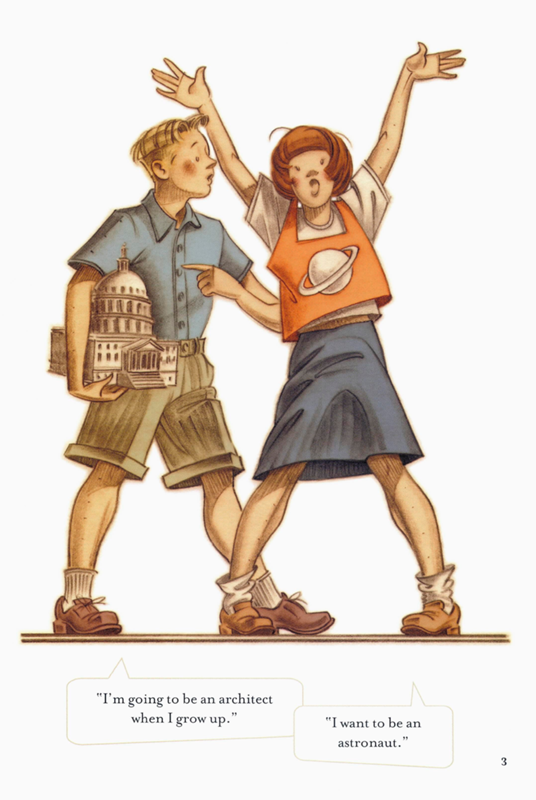
"I'm going to be an architect when I grow up."
"I want to be an astronaut."
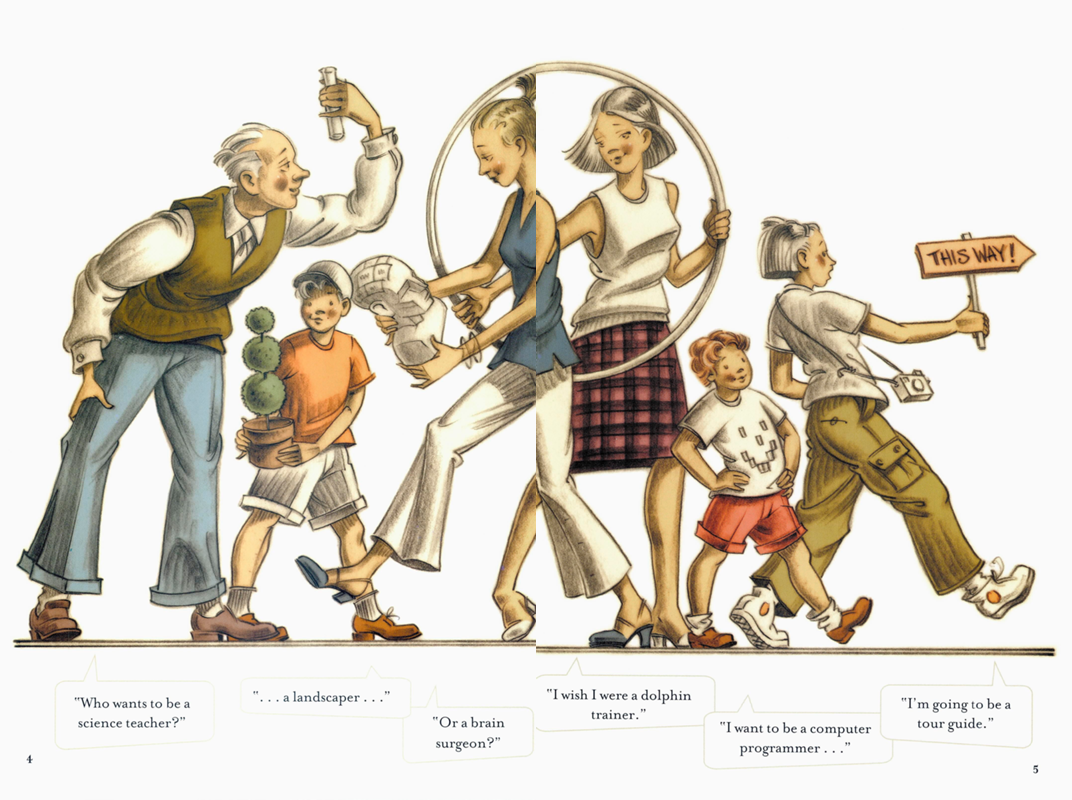
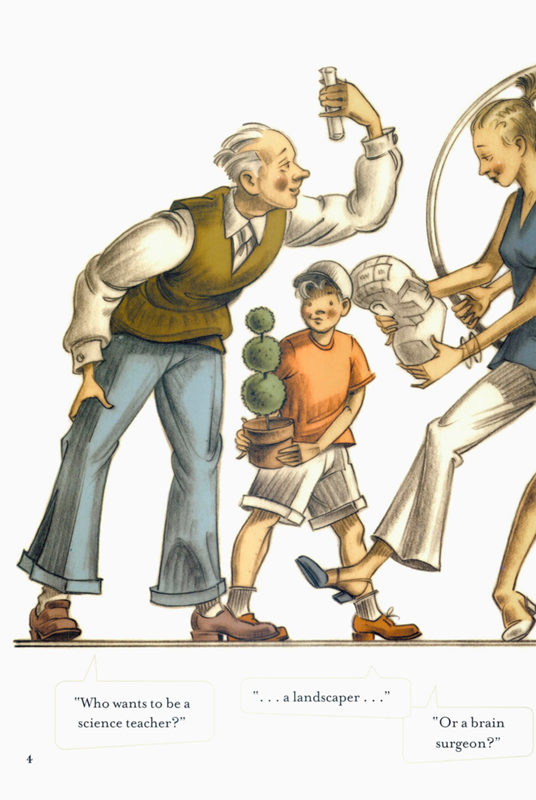

"Who wants to be a science teacher?"
"...a landscaper..."
"Or a brain surgeon?"
"I wish I were a dolphin trainer."
"I want to be a computer programmer..."
"I'm going to be a tour guide."
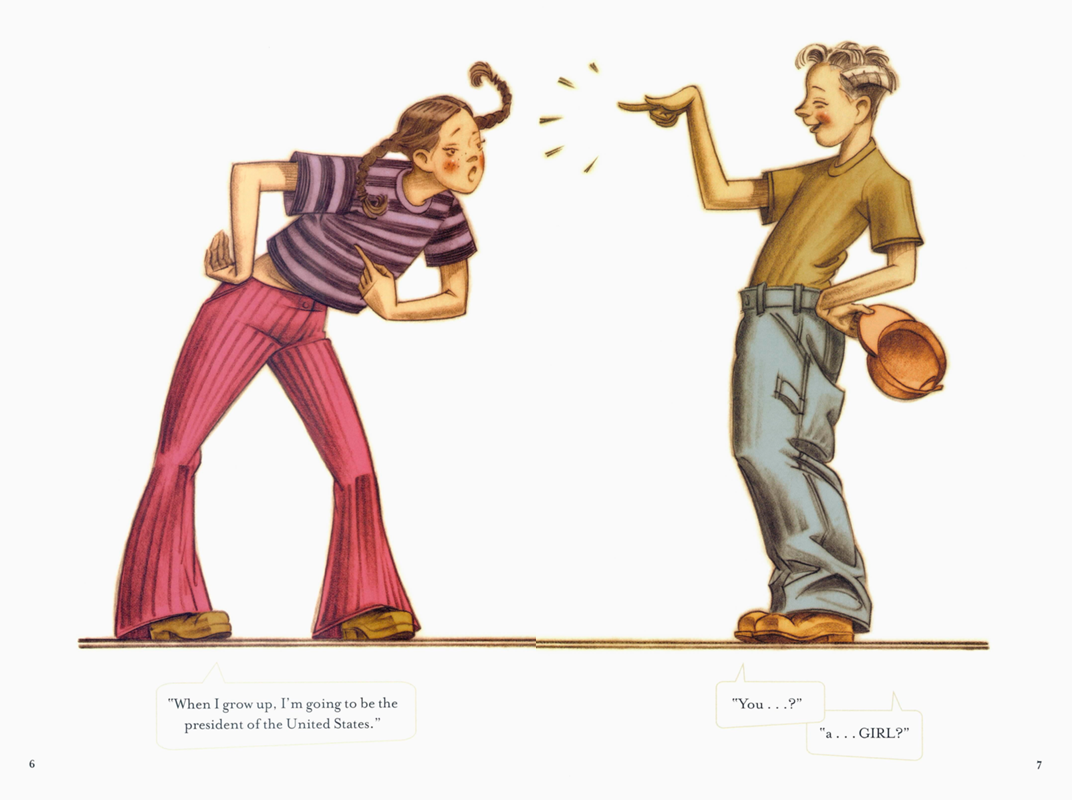
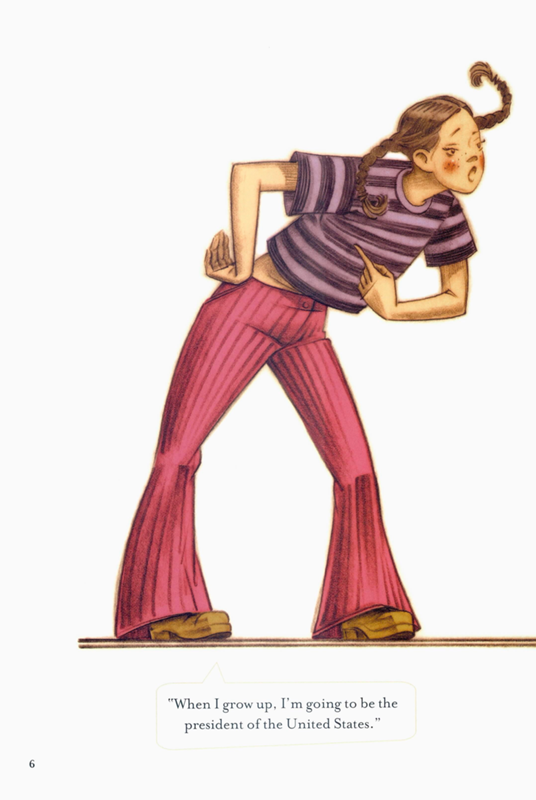

"When I grow up, I'm going to be the president of the United States."
"You ...?"
"a ... GIRL?"
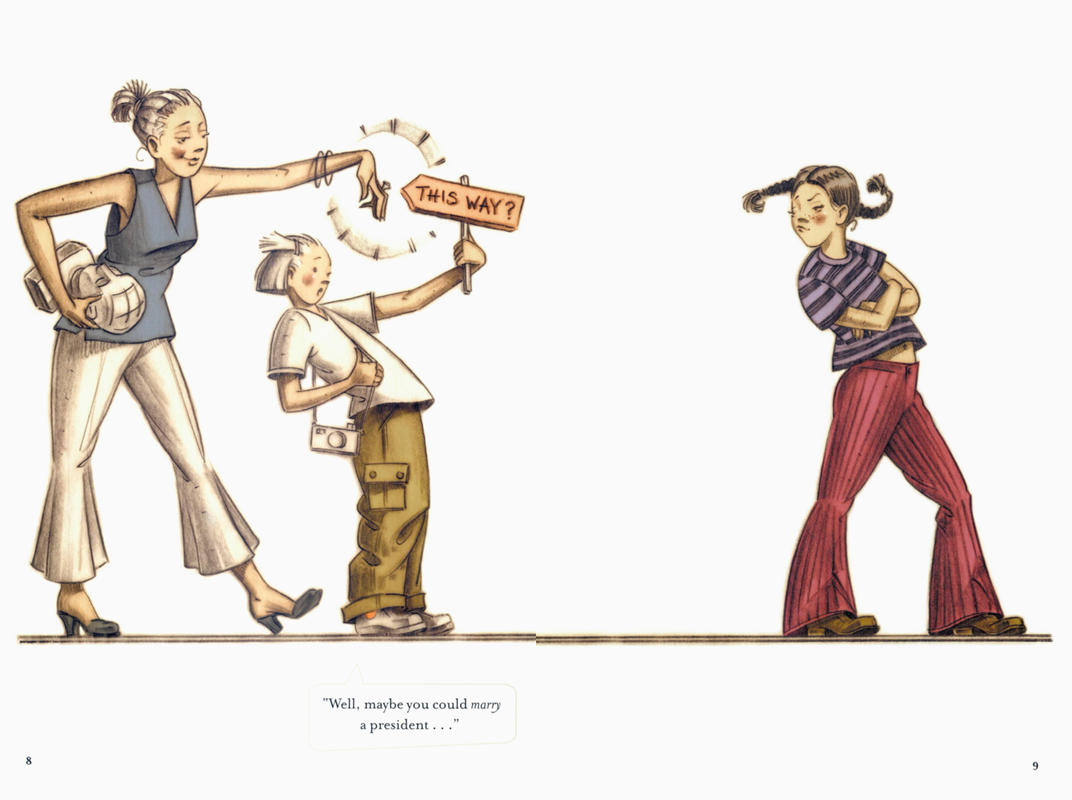
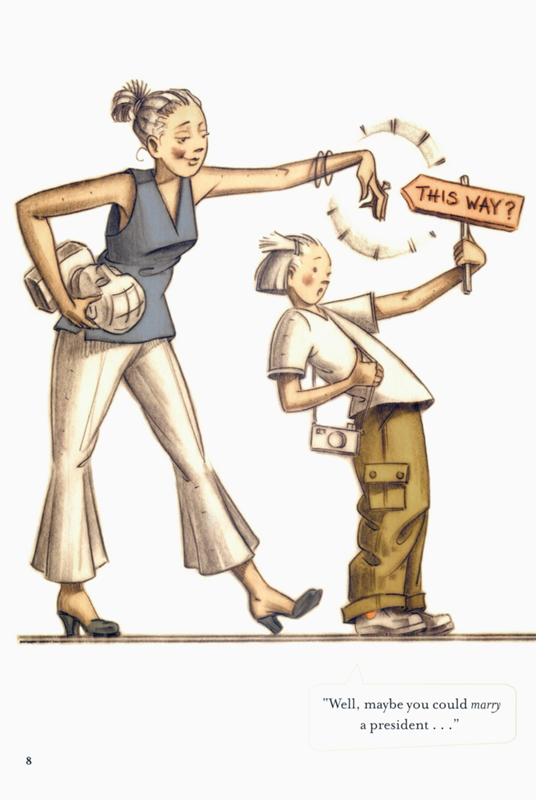
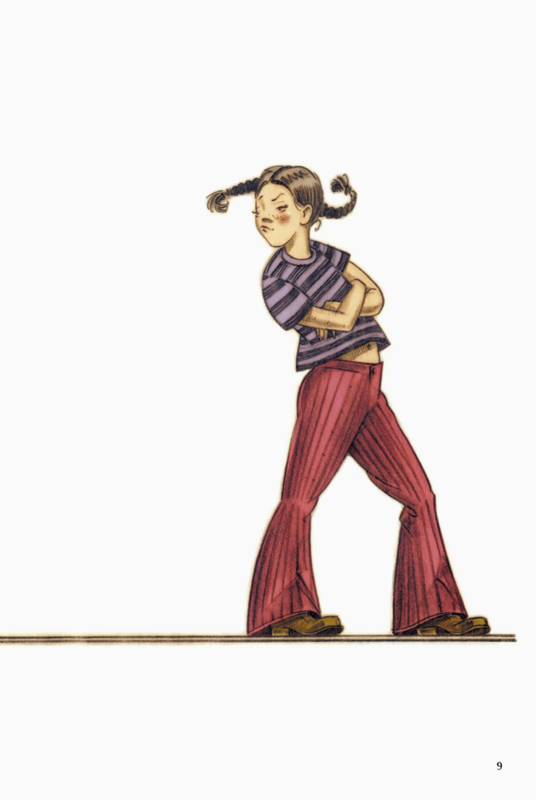
"Well, maybe you could marry a president..."
Abigail Adams
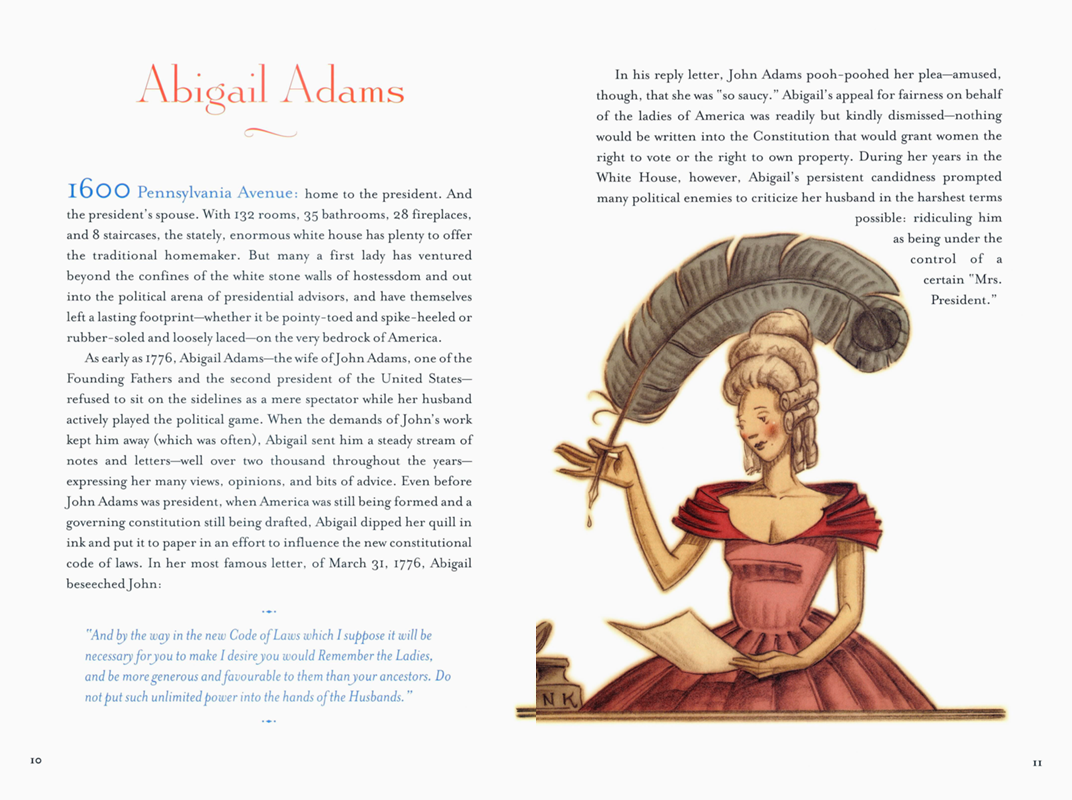
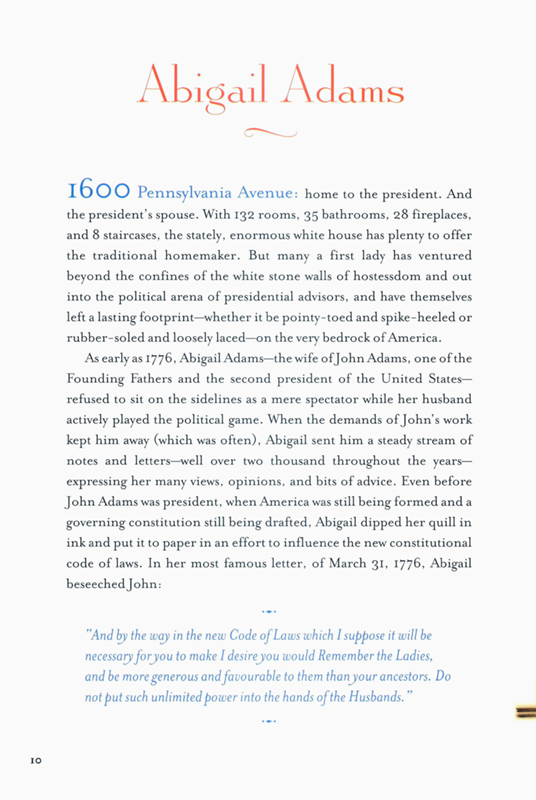
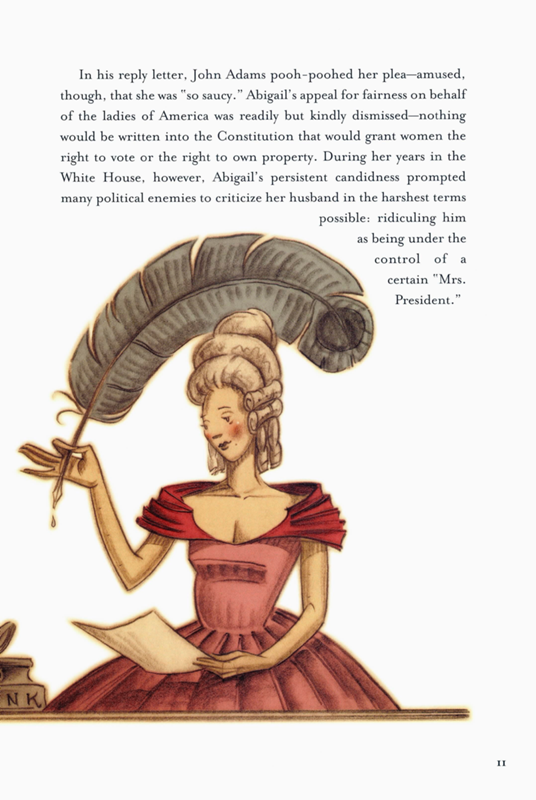
1600 Pennsylvania Avenue: home to the president. And the president's spouse. With 132 rooms, 35 bathrooms, 28 fireplaces, and 8 staircases, the stately, enormous white house has plenty to offer the traditional homemaker. But many a first lady has ventured beyond the confines of the white stone walls of hostessdom and out into the political arena of presidential advisors, and have themselves left a lasting footprintwhether it be pointy-toed and spike-heeled or rubber-soled and loosely lacedon the very bedrock of America.
As early as 1776, Abigail Adamsthe wife of John Adams, one of the Founding Fathers and the second president of the United Statesrefused to sit on the sidelines as a mere spectator while her husband actively played the political game. When the demands of John's work kept him away (which was often), Abigail sent him a steady stream of notes and letterswell over two thousand throughout the yearsexpressing her many views, opinions, and bits of advice. Even before John Adams was president, when America was still being formed and a governing constitution still being drafted, Abigail dipped her quill in ink and put it to paper in an effort to influence the new constitutional code of laws. In her most famous letter, of March 31, 1776, Abigail beseeched John:
"And by the way in the new Code of Laws which I suppose it will be necessary for you to make I desire you would Remember the Ladies, and be more generous and favourable to them than your ancestors. Do not put such unlimited power into the hands of the Husbands. "
In his reply letter, John Adams pooh-poohed her pleaamused, though, that she was "so saucy." Abigail's appeal for fairness on behalf of the ladies of America was readily but kindly dismissednothing would be written into the Constitution that would grant women the right to vote or the right to own property. During her years in the White House, however, Abigail's persistent candidness prompted many political enemies to criticize her husband in the harshest terms possible: ridiculing him as being under the control of a certain "Mrs. President."
Edith Bolling Wilson
It was quite the ventriloquist act. The Edith and Woodrow Show: she talked; he, supposedly, supplied the words. She hadn't been elected, and her actions were illegal according to the U.S. Constitution, but for all intents and purposes, First Lady Edith Boiling Wilson was in fact the president. When President Wilson suffered a paralyzing stroke in 1918, Edith (secretly) stepped in and assumed the presidential duties.
"So began my stewardship," Edith commented. "I studied every paper, sent from the different Secretaries or Senators, and tried to digest and present in tabloid form the things that, despite my vigilance, had to go to the President."
She was the sole liaison between the ailing president and absolutely everyoneincluding Congress. All the presidential correspondence was filtered through Edith, sent on White House stationery and penned in her hand, beginning with the words: "The President says..."
For several months, she issued directives in the president's name: authorizing the sale of thousands of tons of wheat flour from the U.S. Grain Corporation to the Polish government; "agreeing" with the secretary of state about withdrawing U.S. representatives from Paris; giving the OK for representatives to sign a treaty with Bulgaria.
Although she steadfastly asserted that she "never made a single decision" pertaining to government matters, recent evidence (provided
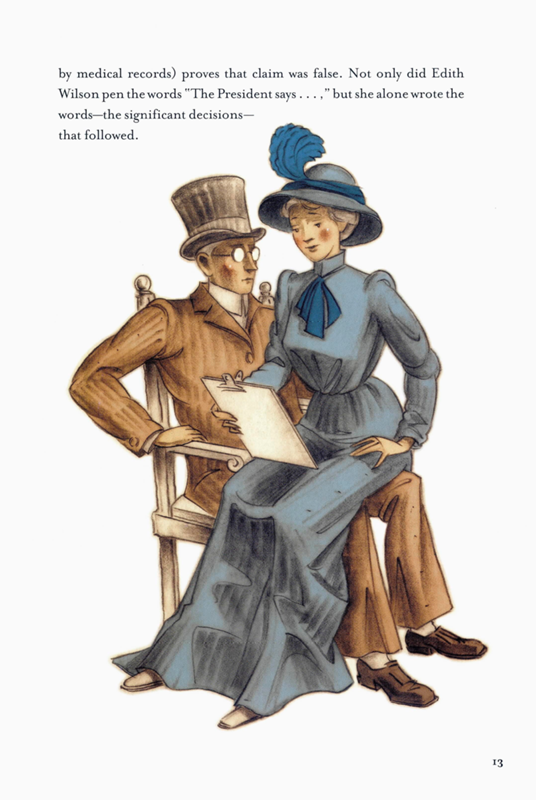
Next page


